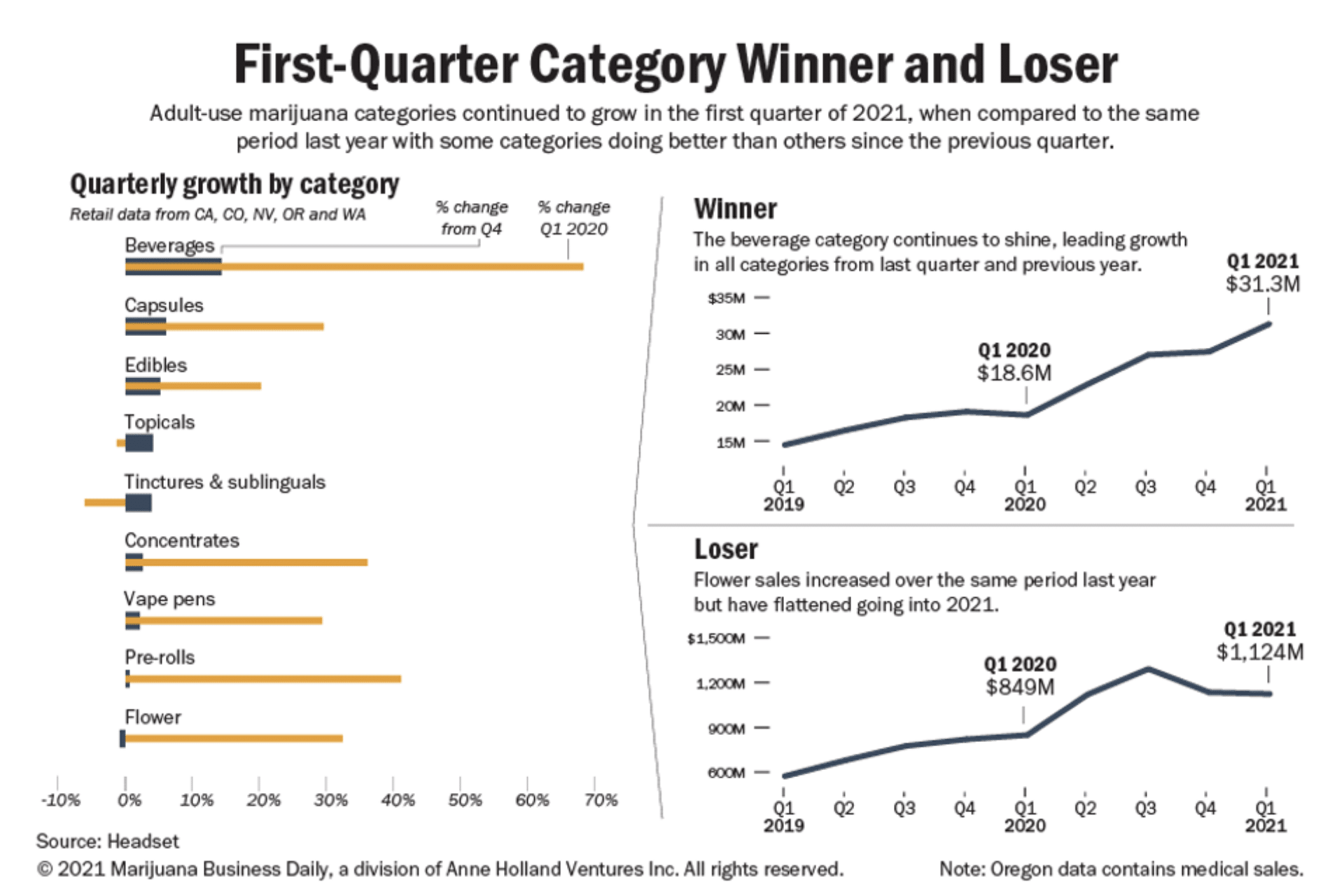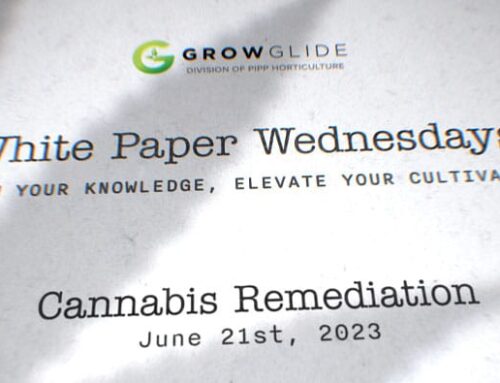In 2004, I used to say I don’t know much about cannabis as medicine, but I also didn’t know much about cannabis cultivation. The more I grew, the more I learned, and the more I realized how hard it was to produce medicine for my dying mother. Today, most people know someone who uses cannabis as medicine. According to the World Health Organization (WHO), marijuana consumption has an annual prevalence rate of approximately 147 million individuals — nearly 2.5% of the global population. Whether it’s used for diagnosed medical conditions or self-medication, there are challenges in consistently meeting the consumers’ expectations with a plant that needs to be harvested every eight weeks.
In this White Paper Wednesday, we delve into the findings of two notable studies that shed light on the evolving landscape of medicinal cannabis and highlight the challenges related to cultivation, consistency and consumer demand [1, 2].
The Challenges of Cultivating Medicinal Cannabis
You can’t patent a plant. You can, however, patent a process, so some businesses only see the value in the process, and, as a result, the cultivation of the plant begins to suffer. This is the challenge in cultivating high-grade cannabis for medicinal purposes and is a significant challenge for the cannabis industry as a whole.
Any experienced cultivator will tell you cannabis is inconsistent from bud to bud on the same plant in the same room. Cultivar expression is inconsistent from cultivator to cultivator. Phenotypic expression is 50% genetics and 50% environment, so the cultivation environment will impact the production of secondary metabolites and medical efficacy. So, the question is, how does the industry provide the most consistent experience?
The Intersection of Medicinal and Recreational Markets
The future of cannabis medicine is in consumer packaged goods, right? Active compound percentages, terpene ratios and controlled dosages give way to hyped genetics, bag appeal, color and aroma. The rise of drinks, gummies and extracted consumables are dominating the broadcasted metrics and sell-through numbers. See Here.
Keep in mind, it’s impossible to separate the medical market from the recreational market, but this is still a telling trend. Easy-to-use products like pre-rolls allow new customers to enter the market without hesitation. Vape pens allow for discreet consumption while traveling or at the local BBQ. Edibles and capsules allow for consumption without anyone else having to know. The drinks market is growing so quickly that you often see cannabis beverages in a cooler along with craft brews and flavored sparkling water at the beach.
Trial & Error Approaches: The Impact of Limited Research
The classic cannabis connoisseur will never give up on flower, as they have a collection of grinders, papers, pipes, and activities on which the cannabis industry was built, but they accept the variability of every single bud. They find brands that provide a range of consistency that satisfies their value proposition. Consistency of cannabinoids and terpene ratios is not as important as trying something new, bringing a bag of fire to a party, or finding something solid to celebrate with, and concentrate artists have allowed for an evolution of the consumer, the tools, the experience, the flavors and the celebration of individual batches. You can taste the process of extraction. You taste the water in solventless. You taste the temperature in Rosin. You taste the mechanical mastery that allows for the capture of more flavor and richness. And after a while, you taste the packaging and the exposure to oxygen, light and temps. It all impacts the experience.
It’s impossible to deny that these products can give you medical efficacy, but the lack of consistent and dependable doses to fight cancer, glaucoma or MS means medical patients and recreational users are forced to diversify their consumption tactics until they find something that works for them. In a sense, medical patients and recreational users are both self-medicating, experimenting and practicing trial and error to live a better life.
Why does all of this matter? The lack of research prevents doctors from effectively prescribing cannabis. As this white paper states, federal regulations have prevented the research needed to understand what aspects of cultivated cannabis work best for what issues. As a result, the efficacy studies are often inaccurate, over-generalized and lead to the development of products like Marinol, Sativex and other manufactured catch-all cannabis solutions. We don’t know if GMOs are the best for cancer. Is it the myrcene, limonene and alpha-pinene terpenes in the Phinest cut that work the best? Is it the proportions of terpenes relative to each other that increase the effectiveness? Is it a 5:1 CBD to THC ratio? Could all the other secondary metabolites we don’t even measure make this a good medicine? It depends on who you ask!
Embracing Diversity in the Cannabis Market
Diversity is key. Diversity of cultivars, cultivation styles and brands that serve the diverse cannabis consumer. Every person has an endocannabinoid system [3]. Everyone will react differently to different dosages of different cannabinoids. It will never be as simple as this product solves this problem for this person. It will always be today these products provide the highest likelihood of success for me.
So does this mean that cannabis will never be medicine? Obviously not. Just google how many people have been saved by cannabis — without a single death from overdose. This means that the market will continue to evolve and produce various products that satisfy different medical needs. This also means cultivators must know how to succeed as these market opportunities develop.
The Quest for Consistency: Action Steps to Follow
Here are some of the most important things cultivation directors can do to serve the medical (and recreational) market as the demand for more consistency and predictability increases.
#1 Know your cultivars. It’s more than just growing what is hot; it’s about getting predictable results. Know what you expect to hit on THC, CBD, and not just the terps but the rations of terps relative to each other. This allows you to slot in new cultivars that might have the same medical efficacy for your customers. This also allows you to have predictable extract results and chase/breed cultivars that can improve the metrics that you value.
#2 Invest in environmental control and get granular data. This is just another way to say that phenotypic expression is something you have 50% control over. Cold air dups, day-to-night differentials, weekly environmental itineraries and senescence techniques all influence expression and impact the medical efficacy of your products. Environmental control will also help keep pest and pathogen pressures under control to ensure predictable harvests. The granular data helps you know when lights are underperforming, when media should not be used, when water carries heavy metals and what other elements of the environment you can control to ensure plant vitality.
#3 Consistent post-harvest processing. Whether you extract freshly frozen or hang your cannabis to cure for 20 days, you must ensure you have standard operating procedures (SOPs), tools and mechanical solutions that allow you to execute consistent action plans. Understand how to measure product temperature accurately. For example, frozen is a generic and relative term. In the curing space, the ambient condition is different than your product temperature, so it’s essential to understand this relationship to create successful SOPs that allow you to satisfy the customers’ needs — every time.
#4 Document the process and provide quality checks along the way. This is what makes your facility scalable. There is no secret anymore. You either know how to use the tools or you don’t. You either hit the numbers/goals or you don’t. The key is to find a defendable position and corrective action when you fail. Because you will fail. HVACD compressors will fail, diodes will fail, pumps will fail, employees will fail, and your SOPs will need to be updated regularly. However, when you understand the why of these failures and have a fast and appropriate response, you can always bounce back.
#5 Be honest with your customers. In the old days, we would tell our friends/customers, “This batch isn’t as good,” “This run got too hot,” or “I had to spray for mites in week two on this run.” This would set expectations, influence the pricepoint and frame the value. Are you practicing an appropriate level of transparency? Can you help medical patients find a range of products that work for them? Can you provide enough consistency that they can count on you, spend money with you and have their expectations met? They can if you are honest.
The Takeaway
Medical cannabis is loosely understood at best, but the market, the science and the business are evolving. Are you evolving with the consumer? Are you ahead or behind? Do you have the right partners to help you thrive in the marketplace? By staying adaptable, knowledgeable and forward-thinking, you can navigate the ever-changing landscape of medical cannabis and contribute to the advancement of cannabis as a legitimate form of medicine.
[1] Bridgeman, M. B., & Abazia, D. T. (2017). Medicinal Cannabis: History, Pharmacology, And Implications for the Acute Care Setting. P & T : a peer-reviewed journal for formulary management, 42(3), 180–188.
[2] Chandra, S., Lata, H., & ElSohly, M. A. (2020). Propagation of Cannabis for Clinical Research: An Approach Towards a Modern Herbal Medicinal Products Development. Frontiers in plant science, 11, 958. https://doi.org/10.3389/fpls.2020.00958
[3] Brown, T. (2021). The Endocannabinoid System Explained By Dr Matty Moore. Honahlee. https://honahlee.com.au/articles/endocannabinoid-system-explained/














